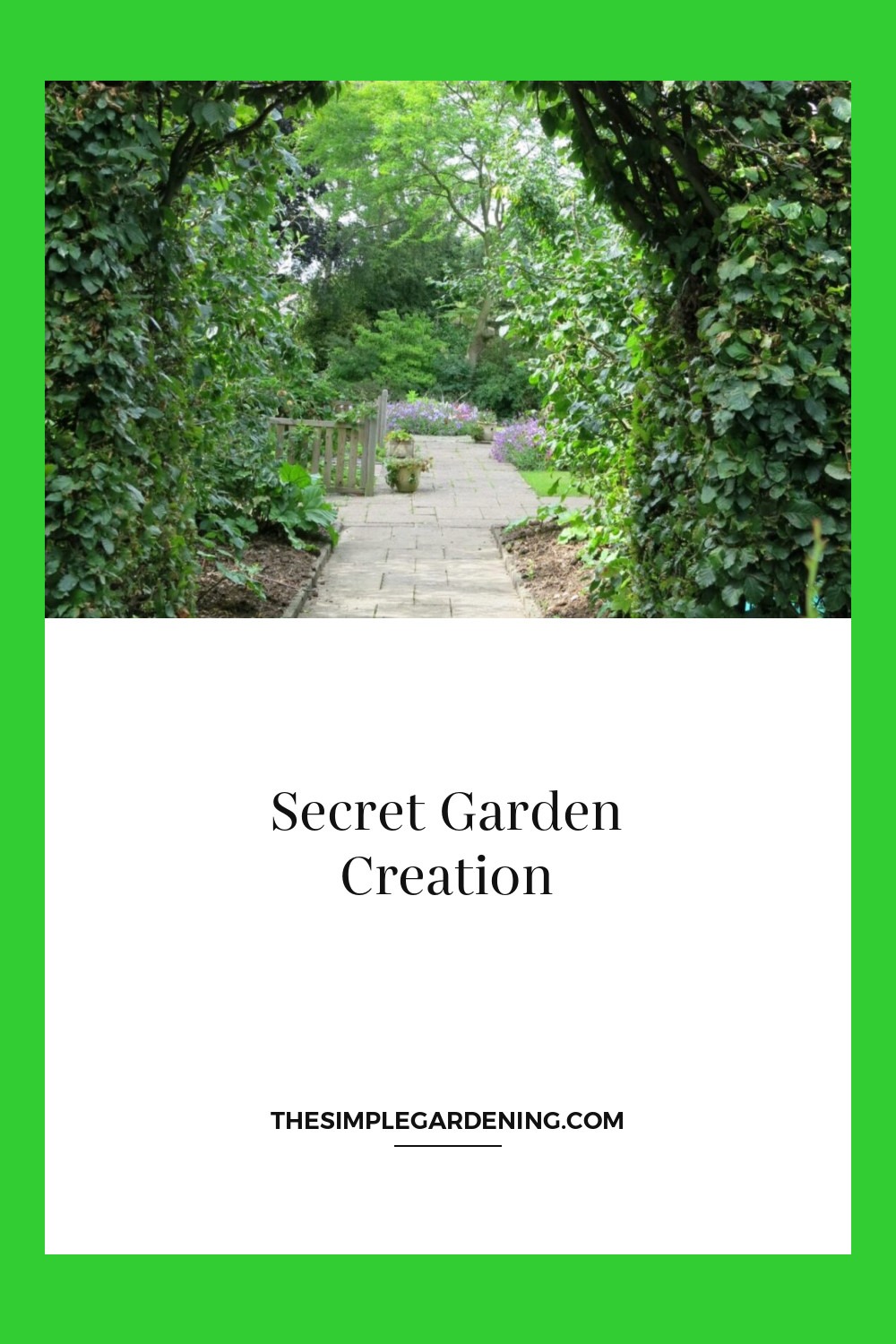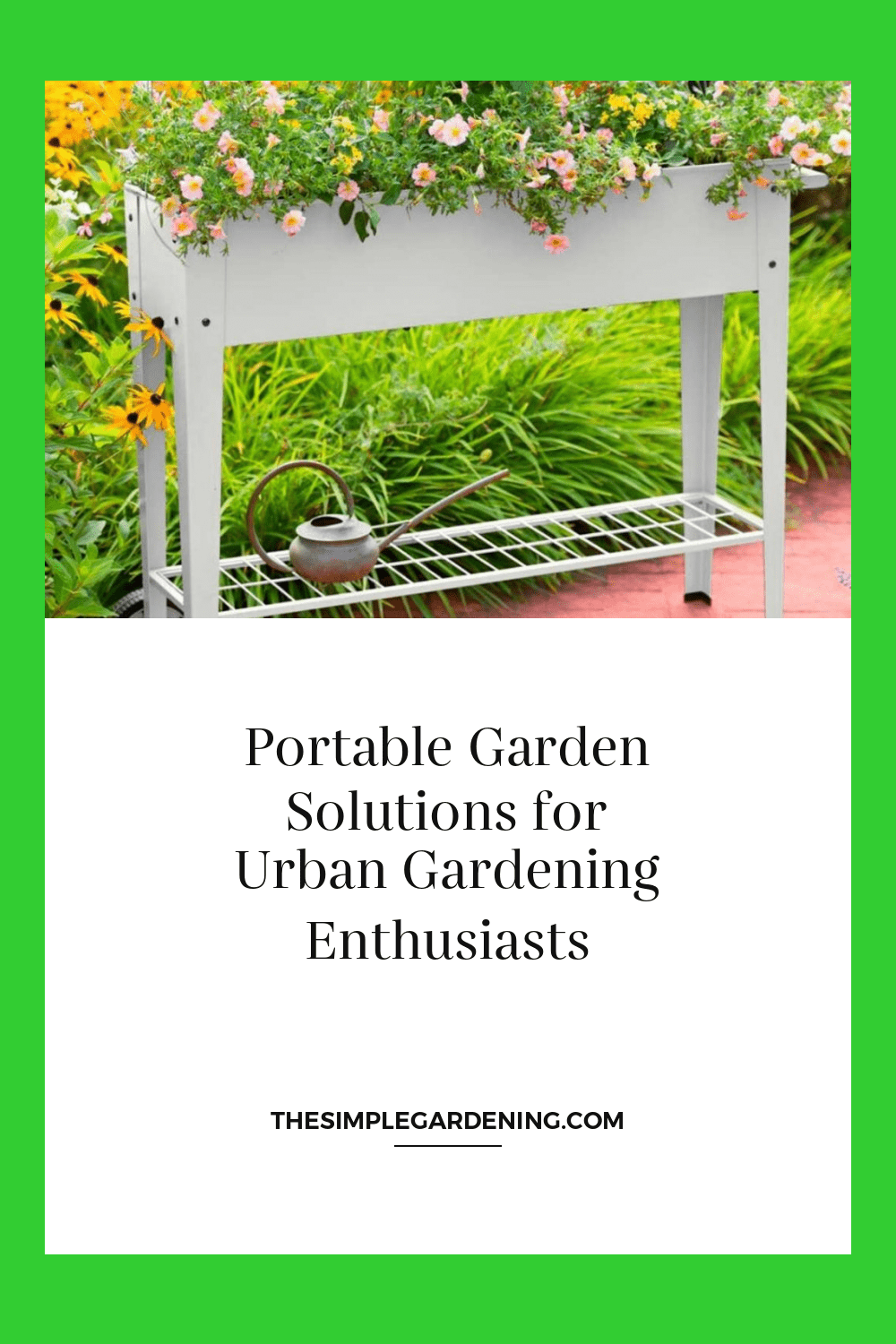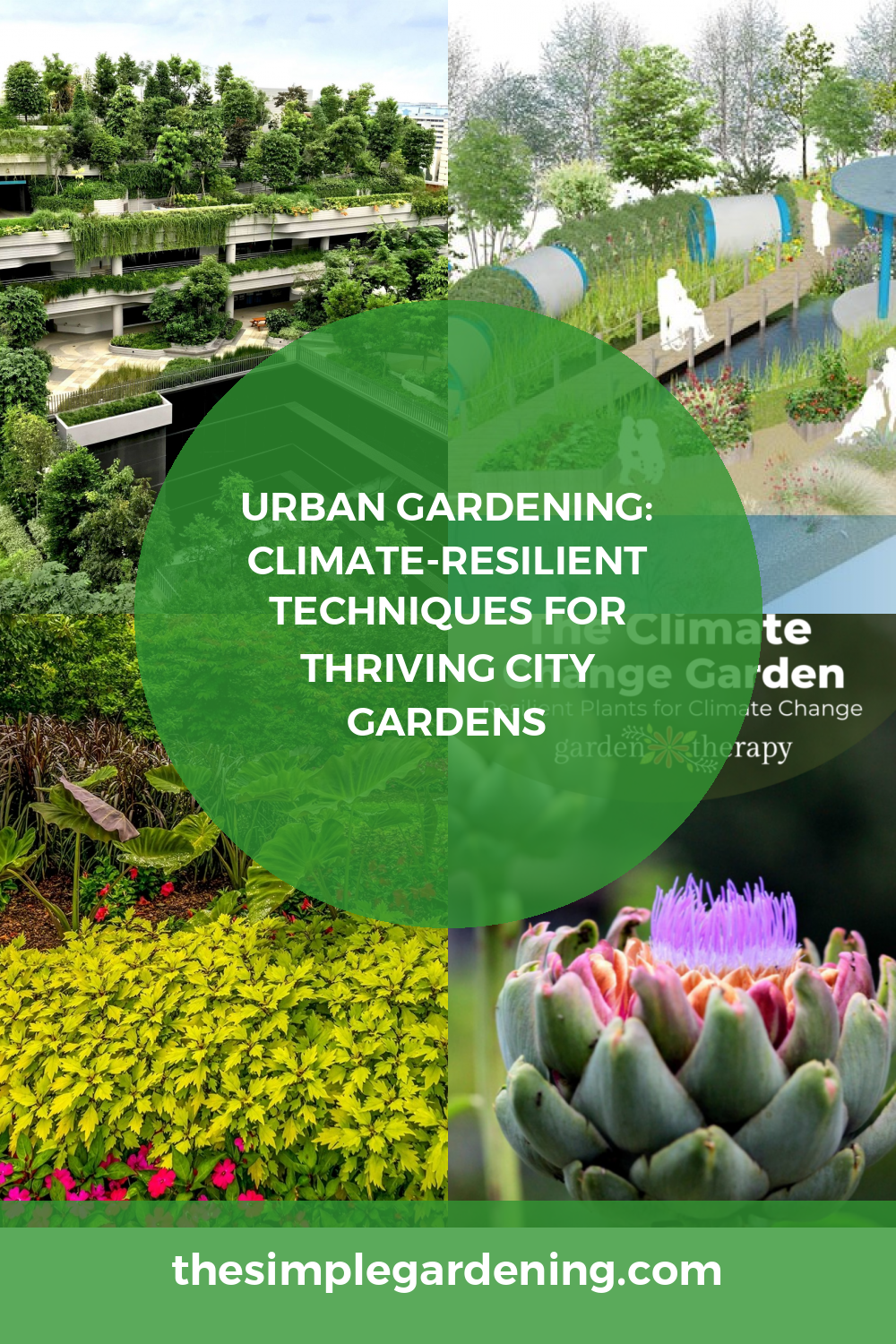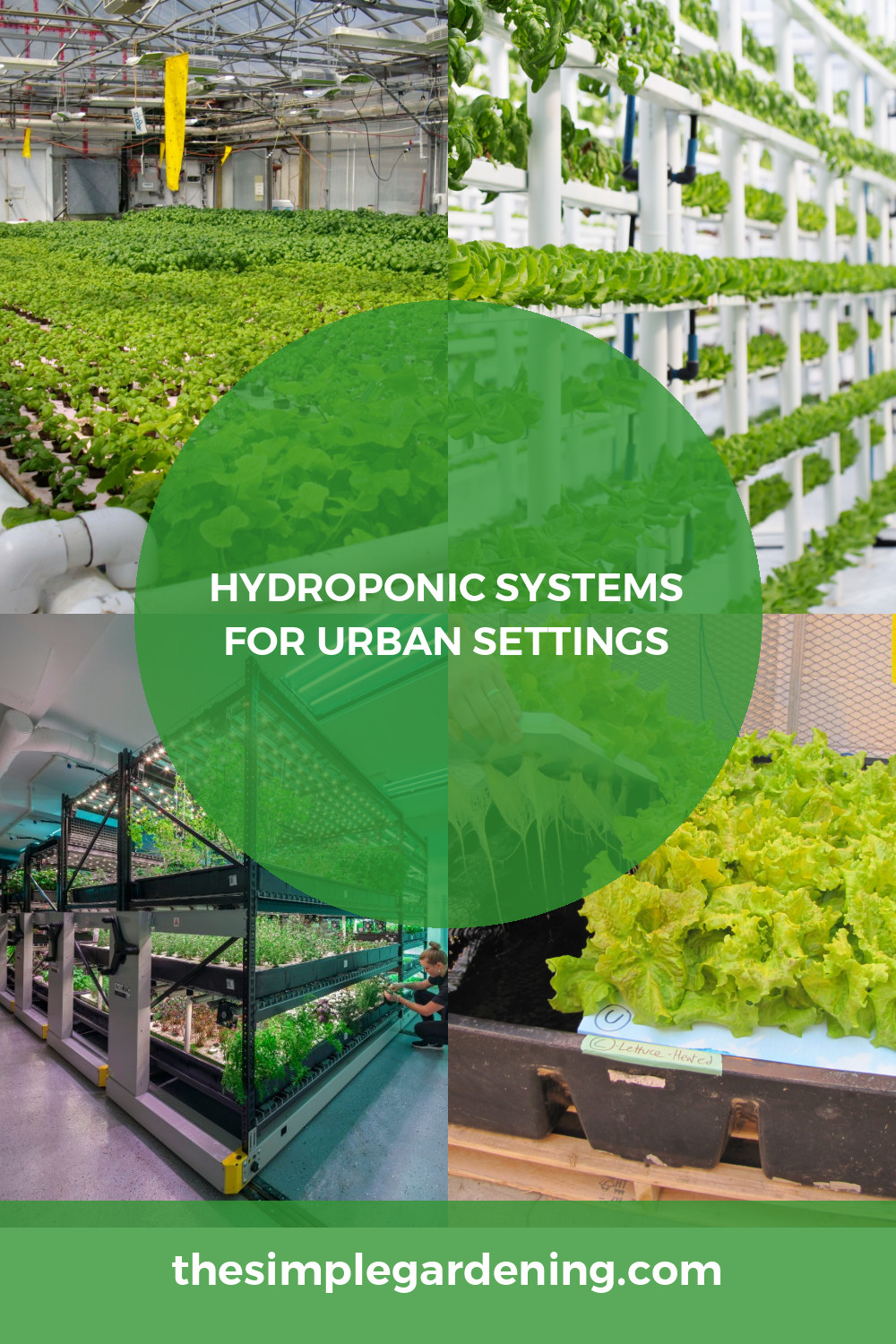Definition and Concept of Secret Gardens
A secret garden is a secluded, often hidden, outdoor space designed to provide a sense of tranquility and escape from the outside world. These gardens are characterized by their intimate atmosphere, lush greenery, and thoughtful design elements that create a sense of mystery and discovery.
Key Elements of a Secret Garden
| Element | Description |
|---|---|
| Seclusion | Enclosed spaces that feel private and intimate. |
| Pathways | Meandering paths that invite exploration. |
| Hidden Corners | Nooks and crannies that provide a sense of discovery. |
| Lush Plantings | Dense, layered vegetation for a natural feel. |
| Decorative Features | Artistic elements like statues, benches, and water features. |
Historical and Cultural Significance
Secret gardens have a rich history and cultural significance, often featured in literature and art as symbols of refuge and contemplation.
Historical Highlights
| Era | Significance |
|---|---|
| Medieval Europe | Monastic cloisters used for meditation and study. |
| Renaissance Italy | Walled gardens for private reflection and recreation. |
| Victorian England | Romanticized secret gardens in literature and estate gardens. |
| Asian Cultures | Zen gardens and Chinese scholar gardens for philosophical reflection. |
Benefits of Creating a Secret Garden in Urban Areas
Creating a secret garden in an urban area offers numerous benefits, from enhancing mental well-being to providing a green oasis in a concrete jungle.
Benefits Overview
| Benefit | Description |
|---|---|
| Mental Health | Provides a peaceful retreat from urban stress. |
| Privacy | Creates a personal space for relaxation and solitude. |
| Biodiversity | Supports urban wildlife and plant diversity. |
| Aesthetics | Enhances the visual appeal of urban spaces. |
| Community | Can foster community interaction and gardening collaborations. |
Planning Your Secret Garden
Identifying the Ideal Location
Choosing the right location is crucial for the success of your secret garden.
Location Factors
| Factor | Description |
|---|---|
| Space Availability | Assess the size and shape of the available area. |
| Sunlight | Determine the amount of daily sunlight. |
| Accessibility | Ensure easy access for maintenance. |
| Privacy | Select a spot that can be easily secluded. |
| Proximity | Consider proximity to utilities like water sources. |
Assessing Space and Sunlight
Evaluating the space and sunlight will help in designing a garden that thrives in its environment.
Space and Sunlight Considerations
| Consideration | Details |
|---|---|
| Sun Exposure | Full sun, partial shade, or full shade. |
| Microclimates | Identify areas that may have different climate conditions. |
| Space Utilization | Plan for vertical and horizontal use of space. |
| Natural Features | Incorporate existing trees, rocks, and slopes into the design. |
| Flow and Movement | Ensure pathways and spaces allow for comfortable movement. |

Source Image: www.pinterest.com
Budgeting and Financial Planning
Budgeting is essential to ensure you can complete your secret garden project without financial stress.
Budget Planning Steps
| Step | Action |
|---|---|
| Initial Costs | Estimate costs for initial setup (plants, soil, structures). |
| Ongoing Costs | Plan for maintenance costs (fertilizers, water, repairs). |
| DIY vs. Professional | Decide what tasks you can DIY and what requires professional help. |
| Resource Allocation | Prioritize spending based on importance and impact. |
| Contingency Fund | Set aside funds for unexpected expenses. |
Choosing a Theme and Style
Selecting a theme will guide your plant choices, layout, and decorative elements.
Popular Garden Themes
| Theme | Description |
|---|---|
| Cottage Garden | Informal, dense plantings with flowers and herbs. |
| Zen Garden | Minimalist, with rocks, gravel, and simple plantings. |
| Formal Garden | Symmetrical designs with manicured hedges and lawns. |
| Wildlife Garden | Designed to attract and support local wildlife. |
| Mediterranean Garden | Drought-resistant plants, warm colors, and rustic features. |
Designing the Layout
Pathways and Walkways
Creating pathways and walkways adds structure and guides visitors through your garden.
Pathway Materials
| Material | Description |
|---|---|
| Gravel | Affordable and easy to install. |
| Stone Pavers | Durable and aesthetic. |
| Brick | Classic and versatile. |
| Wood | Natural look, can blend well with the environment. |
| Mulch | Soft, natural feel but needs regular replenishment. |
Creating Hidden Corners and Nooks
Hidden corners and nooks add mystery and intimacy to your garden.
Ideas for Hidden Corners
| Feature | Description |
|---|---|
| Arbors and Trellises | Structures that create private spaces. |
| Planting Dense Shrubs | Use shrubs to form natural walls and enclosures. |
| Garden Benches | Place benches in secluded spots for relaxation. |
| Secret Pathways | Design pathways that lead to hidden areas. |
| Small Fountains | Add fountains for a tranquil ambiance. |
Incorporating Water Features
Water features add a soothing element to your garden, enhancing the sensory experience.
Types of Water Features
| Feature | Description |
|---|---|
| Fountains | Various designs, from classical to modern. |
| Ponds | Small ponds can support aquatic plants and wildlife. |
| Waterfalls | Adds movement and sound to the garden. |
| Bubbling Rocks | Natural look, great for small spaces. |
| Reflecting Pools | Calm, mirror-like water surfaces. |
Layering Plants for Depth and Privacy
Layering plants of different heights and types creates depth and enhances privacy.
Plant Layering Tips
| Layer | Description |
|---|---|
| Tall Trees | Form the backdrop and provide shade. |
| Medium Shrubs | Add structure and fill gaps. |
| Flowering Plants | Provide color and attract pollinators. |
| Ground Covers | Cover bare soil, reduce weeds. |
| Climbers and Vines | Create vertical interest and cover structures. |

Source Image: matadornetwork.com
Selecting Plants for a Secret Garden
Choosing Evergreen vs. Deciduous Plants
Evergreen and deciduous plants each have their unique benefits in a secret garden.
Evergreen vs. Deciduous
| Type | Benefits |
|---|---|
| Evergreen Plants | Provide year-round color and structure. |
| Deciduous Plants | Offer seasonal interest and change. |
| Combination | Balance both types for variety and continuity. |
| Examples (Evergreen) | Boxwood, Holly, Pine. |
| Examples (Deciduous) | Maple, Oak, Cherry Blossom. |
Incorporating Flowering Plants
Flowering plants add bursts of color and attract beneficial insects.
Popular Flowering Plants
| Plant | Description |
|---|---|
| Roses | Classic and fragrant, various colors. |
| Lavender | Aromatic, attracts bees. |
| Hydrangeas | Large, colorful blooms. |
| Peonies | Lush, showy flowers. |
| Foxglove | Tall spikes of bell-shaped flowers. |
Utilizing Climbers and Vines
Climbers and vines can cover walls, trellises, and create natural screens.
Best Climbers and Vines
| Plant | Description |
|---|---|
| Clematis | Large, colorful flowers, various varieties. |
| Ivy | Evergreen, great for covering structures. |
| Wisteria | Cascading blooms, very fragrant. |
| Honeysuckle | Attracts hummingbirds, sweet scent. |
| Trumpet Vine | Vigorous grower, attracts pollinators. |
Selecting Ground Covers and Shrubs
Ground covers and shrubs fill in spaces and add low-level interest.
Top Ground Covers and Shrubs
| Plant | Description |
|---|---|
| Hosta | Large leaves, shade tolerant. |
| Creeping Thyme | Aromatic, low-growing. |
| Boxwood | Evergreen, easily shaped. |
| Azalea | Bright blooms in spring. |
| Juniper | Evergreen, various forms. |

Source Image: www.pinterest.com
Creating Privacy
Planting Hedges and Privacy Screens
Hedges and privacy screens are essential for creating a secluded garden space.
Effective Privacy Plants
| Plant | Description |
|---|---|
| Boxwood | Dense, evergreen hedge. |
| Arborvitae | Tall, narrow, evergreen. |
| Bamboo | Fast-growing, creates a natural screen. |
| Privet | Hardy, deciduous hedge. |
| Holly | Spiny leaves, evergreen. |
Using Trellises and Lattice Panels
Trellises and lattice panels can support climbing plants and add vertical privacy.
Trellis and Lattice Ideas
| Material | Description |
|---|---|
| Wood | Natural look, easily customizable. |
| Metal | Durable, various designs. |
| Vinyl | Low maintenance, weather-resistant. |
| Freestanding | Movable, versatile placement. |
| Wall-Mounted | Attached to existing structures for added support. |
Installing Fences and Walls
Fences and walls provide solid barriers for privacy and security.
Fence and Wall Options
| Material | Description |
|---|---|
| Wood | Classic, customizable, natural look. |
| Brick | Durable, traditional aesthetic. |
| Stone | Rustic, blends with natural elements. |
| Metal | Modern, sturdy, and secure. |
| Living Walls | Vertical gardens that double as privacy screens. |
Strategic Placement of Trees and Tall Plants
Strategically placing trees and tall plants enhances privacy and creates a layered effect.
Strategic Planting Tips
| Consideration | Description |
|---|---|
| Spacing | Ensure enough space for mature growth. |
| Variety | Mix different heights and types for interest. |
| Windbreaks | Use tall plants to protect from wind. |
| Shade | Position trees to provide shade in desired areas. |
| Views | Block unwanted views with strategic planting. |
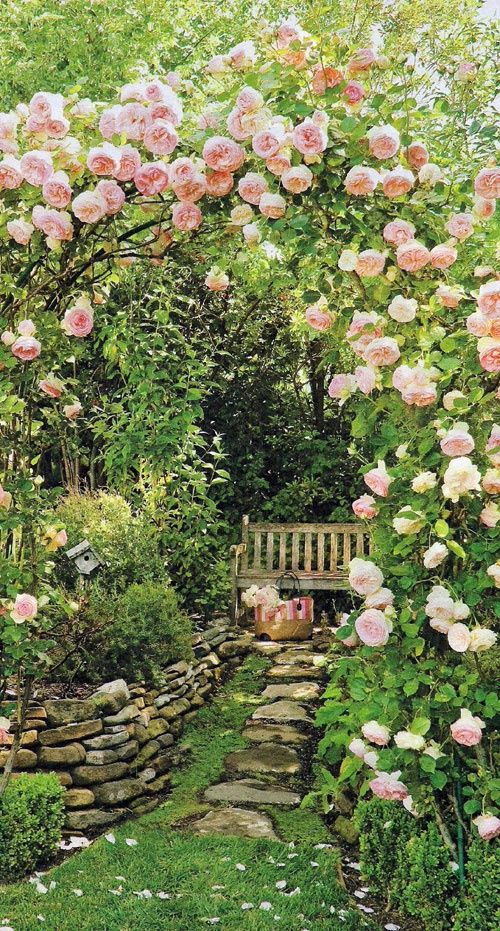
Source Image: www.topdreamer.com
Secret Garden Creation
Decorative Elements
Adding Garden Art and Statues
Garden art and statues add personality and focal points to your garden.
Garden Art Ideas
| Art Type | Description |
|---|---|
| Statues | Classical, whimsical, or modern sculptures. |
| Garden Ornaments | Decorative items like gazing balls and birdbaths. |
| Wind Chimes | Adds sound and movement. |
| Stepping Stones | Decorative paths and accents. |
| Hanging Decorations | Items like lanterns and mobiles. |
Installing Benches and Seating Areas
Seating areas provide places to relax and enjoy your garden.
Seating Ideas
| Type | Description |
|---|---|
| Wooden Benches | Classic and comfortable. |
| Stone Benches | Durable and natural. |
| Swing Seats | Adds a playful element. |
| Hammocks | Perfect for relaxation. |
| Garden Chairs | Flexible and movable seating options. |
Choosing Pots and Planters
Pots and planters are versatile and can add color and structure to your garden.
Popular Planters
| Material | Description |
|---|---|
| Terracotta | Classic look, porous material. |
| Ceramic | Decorative, various colors and designs. |
| Wood | Natural look, can blend well with plants. |
| Metal | Modern and industrial aesthetic. |
| Plastic | Lightweight, affordable, various styles. |
Lighting for Ambiance and Security
Proper lighting enhances the ambiance and ensures safety in your garden.
Lighting Options
| Type | Description |
|---|---|
| Solar Lights | Eco-friendly, easy to install. |
| String Lights | Adds a magical touch. |
| Pathway Lights | Illuminates walkways for safety. |
| Spotlights | Highlights specific features. |
| Lanterns | Adds a cozy, vintage feel. |
Water Features and Fountains
Types of Water Features
Water features come in various styles and sizes, suitable for different garden themes.
Common Water Features
| Type | Description |
|---|---|
| Birdbaths | Attracts birds, simple installation. |
| Tiered Fountains | Adds height and sound. |
| Wall Fountains | Space-saving, mounted on walls. |
| Reflecting Pools | Creates a calm, reflective surface. |
| Pondless Waterfalls | Easy maintenance, recirculates water. |
Installing a Small Pond
A small pond can be a beautiful focal point and support aquatic life.
Pond Installation Steps
| Step | Action |
|---|---|
| Site Selection | Choose a level, sunny location. |
| Excavation | Dig the pond to the desired shape and depth. |
| Lining | Install a pond liner to prevent leaks. |
| Filling | Fill the pond with water and add plants. |
| Stocking | Introduce fish and other aquatic life. |

Source Image: topdreamer.com
Maintaining Water Quality
Maintaining water quality is essential for a healthy pond ecosystem.
Water Quality Tips
| Tip | Description |
|---|---|
| Filtration | Use filters to keep the water clean. |
| Aeration | Ensure proper oxygen levels with pumps or aerators. |
| Regular Cleaning | Remove debris and clean the pond regularly. |
| Balanced Ecosystem | Maintain a balance of plants, fish, and beneficial bacteria. |
| Water Testing | Test water regularly for pH and nutrient levels. |
Adding Aquatic Plants
Aquatic plants enhance the beauty and health of your pond.
Popular Aquatic Plants
| Plant | Description |
|---|---|
| Water Lilies | Floating leaves and beautiful blooms. |
| Lotus | Large, dramatic flowers. |
| Duckweed | Small, floating plants that reduce algae. |
| Cattails | Tall plants that provide shelter for wildlife. |
| Water Hyacinth | Floating plants with striking flowers. |
Wildlife Attraction
Creating Bird-Friendly Habitats
Attracting birds adds life and movement to your garden.
Bird Attraction Tips
| Tip | Description |
|---|---|
| Bird Feeders | Provide food sources like seeds and nectar. |
| Bird Baths | Supply fresh water for drinking and bathing. |
| Native Plants | Grow plants that produce berries and seeds. |
| Nesting Boxes | Install boxes for birds to nest in. |
| Shelter | Create sheltered areas with dense shrubs. |
Attracting Butterflies and Bees
Butterflies and bees are beneficial pollinators that enhance your garden’s health.
Pollinator Attraction Tips
| Tip | Description |
|---|---|
| Nectar-Rich Flowers | Plant flowers like lavender, coneflower, and zinnia. |
| Host Plants | Provide plants for caterpillars to feed on. |
| Water Sources | Offer shallow water dishes with stones. |
| Shelter | Create sheltered areas with dense plantings. |
| Avoid Pesticides | Minimize or eliminate pesticide use. |
Building a Small Wildlife Pond
A small pond can support various forms of wildlife, from amphibians to insects.
Wildlife Pond Tips
| Tip | Description |
|---|---|
| Shallow Edges | Create gently sloping edges for easy access. |
| Varied Depths | Include areas of different depths. |
| Native Plants | Use native aquatic plants for habitat. |
| Rocks and Logs | Add rocks and logs for hiding places. |
| Water Quality | Maintain clean, oxygenated water. |
Providing Shelter and Nesting Areas
Providing shelter and nesting areas encourages wildlife to make your garden their home.
Shelter Ideas
| Idea | Description |
|---|---|
| Hedge Rows | Dense hedges for shelter and nesting. |
| Rock Piles | Create rock piles for reptiles and insects. |
| Brush Piles | Piles of brush and sticks for small mammals and birds. |
| Log Piles | Logs for insects, fungi, and small animals. |
| Nesting Materials | Provide materials like straw and leaves for nesting. |
:max_bytes(150000):strip_icc()/Garden-of-Eden-58b5cae73df78cdcd8bc27a4.jpg)
Source Image: www.learnreligions.com
Soil Preparation and Fertilization
Testing and Amending Soil
Testing and amending your soil ensures it has the right nutrients for healthy plant growth.
Soil Testing Steps
| Step | Action |
|---|---|
| Sample Collection | Collect soil samples from different areas. |
| Testing | Use a soil test kit or send to a lab. |
| Analysis | Analyze pH, nutrient levels, and soil type. |
| Amendment Plan | Add organic matter, lime, or other amendments as needed. |
| Retesting | Retest periodically to monitor soil health. |
Organic vs. Synthetic Fertilizers
Choosing between organic and synthetic fertilizers depends on your garden goals and philosophy.
Fertilizer Comparison
| Type | Benefits |
|---|---|
| Organic | Improves soil structure, environmentally friendly. |
| Synthetic | Immediate nutrient availability, precise formulations. |
| Combination | Using both can balance short-term and long-term needs. |
| Examples (Organic) | Compost, manure, bone meal. |
| Examples (Synthetic) | Granular, liquid, slow-release fertilizers. |
Mulching Techniques
Mulching helps retain moisture, suppress weeds, and improve soil quality.
Mulch Options
| Material | Description |
|---|---|
| Wood Chips | Long-lasting, attractive. |
| Straw | Good for vegetable gardens. |
| Compost | Adds nutrients as it breaks down. |
| Leaves | Readily available, improves soil fertility. |
| Grass Clippings | Nitrogen-rich, good for lawns and gardens. |
Composting for Nutrient-Rich Soil
Composting recycles organic waste into nutrient-rich soil amendments.
Composting Steps
| Step | Action |
|---|---|
| Collection | Collect kitchen scraps and yard waste. |
| Balance | Balance green (nitrogen-rich) and brown (carbon-rich) materials. |
| Aeration | Turn the compost regularly to aerate. |
| Moisture | Keep the compost moist but not soggy. |
| Curing | Allow compost to mature before using. |
Irrigation and Water Management
Installing Drip Irrigation Systems
Drip irrigation delivers water directly to the roots, conserving water and improving efficiency.
Drip Irrigation Setup
| Step | Action |
|---|---|
| Planning | Design the layout based on plant needs. |
| Components | Gather tubing, emitters, and connectors. |
| Installation | Lay out and connect the system. |
| Testing | Test the system for leaks and coverage. |
| Scheduling | Set a watering schedule based on plant requirements. |
Using Rainwater Harvesting
Rainwater harvesting collects and stores rainwater for garden use, reducing reliance on municipal water.
Rainwater Harvesting Tips
| Tip | Description |
|---|---|
| Collection | Install gutters and downspouts to direct rainwater. |
| Storage | Use barrels or tanks to store collected water. |
| Filtration | Filter the water to remove debris. |
| Distribution | Set up a system to distribute water to the garden. |
| Maintenance | Regularly clean and maintain the system. |
Efficient Watering Techniques
Efficient watering techniques help conserve water and ensure plants receive adequate moisture.
Watering Tips
| Tip | Description |
|---|---|
| Deep Watering | Water deeply but less frequently to encourage deep roots. |
| Morning Watering | Water in the morning to reduce evaporation. |
| Mulching | Use mulch to retain soil moisture. |
| Avoid Overwatering | Check soil moisture before watering. |
| Soaker Hoses | Use soaker hoses for even, slow watering. |
Managing Drainage and Preventing Erosion
Proper drainage and erosion control protect your garden from water damage.
Drainage Tips
| Tip | Description |
|---|---|
| Site Assessment | Assess the site for drainage issues. |
| Swales | Create shallow ditches to direct water flow. |
| French Drains | Install French drains to remove excess water. |
| Ground Covers | Use ground covers to prevent soil erosion. |
| Terracing | Terrace slopes to slow water runoff. |

Source Image: makeitagarden.com
Secret Garden Creation
Seasonal Care and Maintenance
Pruning and Deadheading
Regular pruning and deadheading promote healthy growth and prolong flowering.
Pruning Tips
| Tip | Description |
|---|---|
| Timing | Prune at the right time for each plant species. |
| Tools | Use sharp, clean tools to avoid damage and disease. |
| Techniques | Learn proper pruning techniques for different plants. |
| Deadheading | Remove spent flowers to encourage new blooms. |
| Thinning | Thin dense growth to improve air circulation. |
Seasonal Planting and Rotation
Rotating and planting seasonal plants ensures year-round interest and soil health.
Seasonal Planting Tips
| Season | Actions |
|---|---|
| Spring | Plant cool-season vegetables and annuals. |
| Summer | Maintain and harvest crops, plant heat-tolerant varieties. |
| Fall | Plant bulbs, cool-season crops, and perennials. |
| Winter | Protect plants, plan for spring, start seeds indoors. |
| Rotation | Rotate crops to prevent soil depletion and disease. |
Winterizing Your Secret Garden
Winterizing your garden protects plants and structures from harsh winter conditions.
Winterizing Steps
| Step | Action |
|---|---|
| Mulching | Add extra mulch to protect roots. |
| Covering | Use burlap or covers for sensitive plants. |
| Watering | Water thoroughly before the ground freezes. |
| Cleaning | Clean and store tools and containers. |
| Structural Protection | Protect water features and structures from freezing. |
Pest and Disease Management
Managing pests and diseases is crucial for maintaining a healthy garden.
Pest and Disease Control
| Tip | Description |
|---|---|
| Monitoring | Regularly inspect plants for signs of pests and diseases. |
| Natural Predators | Encourage beneficial insects like ladybugs and lacewings. |
| Organic Methods | Use organic pesticides and treatments. |
| Sanitation | Remove diseased plant material promptly. |
| Diverse Plantings | Use diverse plantings to reduce the risk of widespread disease. |
Sustainable Practices
Using Native Plants
Native plants are adapted to local conditions and support local wildlife.
Benefits of Native Plants
| Benefit | Description |
|---|---|
| Low Maintenance | Require less water and care. |
| Pest Resistance | More resistant to local pests. |
| Wildlife Support | Provide food and habitat for local wildlife. |
| Adaptability | Better adapted to local soil and climate. |
| Biodiversity | Enhance local biodiversity. |
Reducing Chemical Use
Reducing chemical use promotes a healthier garden environment.
Chemical Reduction Tips
| Tip | Description |
|---|---|
| Organic Fertilizers | Use organic fertilizers instead of synthetic ones. |
| Natural Pesticides | Opt for natural pest control methods. |
| Companion Planting | Use companion planting to deter pests naturally. |
| Hand Weeding | Remove weeds by hand instead of using herbicides. |
| Soil Health | Improve soil health to reduce the need for chemicals. |
Recycling and Reusing Materials
Recycling and reusing materials can save money and reduce waste.
Recycling Tips
| Tip | Description |
|---|---|
| Composting | Compost kitchen and garden waste. |
| Repurposing | Repurpose old containers and materials. |
| Mulching | Use organic waste as mulch. |
| Water Reuse | Reuse greywater for irrigation. |
| Salvaged Materials | Use salvaged materials for garden structures. |
Encouraging Biodiversity
Encouraging biodiversity supports a healthy and resilient garden ecosystem.
Biodiversity Tips
| Tip | Description |
|---|---|
| Plant Diversity | Plant a variety of species. |
| Habitat Creation | Create habitats for different wildlife. |
| Avoid Monocultures | Avoid planting large areas with a single species. |
| Water Sources | Provide water sources for wildlife. |
| Native Plants | Use native plants to support local ecosystems. |

Source Image: www.pinterest.com
Benefits to Mental Health and Wellbeing
Engaging in gardening activities can have profound effects on mental health and overall wellbeing.
Mental Health Benefits
| Benefit | Description |
|---|---|
| Stress Reduction | Gardening promotes relaxation and reduces stress levels. |
| Mindfulness | Focus on the present moment while gardening, promoting mindfulness. |
| Physical Activity | Gardening provides gentle exercise and improves physical health. |
| Sense of Accomplishment | Seeing plants grow and thrive boosts self-esteem and confidence. |
| Connection to Nature | Spending time outdoors in nature promotes a sense of connection. |
Case Studies and Inspirations
Examining real-life examples of secret gardens can inspire and inform your own gardening endeavors.
Case Studies
- Butchart Gardens, Canada: A stunning example of a transformed quarry into a world-renowned garden.
- Claude Monet’s Garden, France: The inspiration behind some of Monet’s most famous paintings.
- Alnwick Garden, UK: Known for its unique garden features like the Poison Garden and the Grand Cascade.
- Keukenhof Gardens, Netherlands: A breathtaking display of millions of tulips and other spring bulbs.
- Hampstead Hill Gardens, UK: Hidden gem of London, featuring a series of terraces and unique plantings.
Famous Secret Gardens Around the World
Exploring famous secret gardens offers insight into different gardening styles and techniques.
Secret Gardens
- Katsura Imperial Villa, Japan: A masterpiece of Japanese garden design, featuring serene ponds and meticulously pruned trees.
- Villa d’Este, Italy: Renaissance garden renowned for its terraces, water features, and intricate sculptural details.
- Generalife, Spain: Part of the Alhambra palace complex, Generalife boasts lush gardens, fountains, and shaded walkways.
- Nong Nooch Tropical Botanical Garden, Thailand: Home to a vast collection of tropical plants and themed garden areas.
- Ryoan-ji Temple, Japan: Famous for its Zen rock garden, designed for quiet contemplation and meditation.
Personal Stories and Transformations
Sharing personal stories of garden transformations highlights the power of gardening to enrich lives.
Transformation Tales
- From Concrete Jungle to Green Oasis: A city dweller’s journey to create a secret garden retreat on a small urban balcony.
- Healing Through Horticulture: How gardening helped overcome personal challenges and provided a sense of purpose.
- Family Bonding in the Garden: A multigenerational project that brought together family members and strengthened relationships.
- Garden Therapy: Stories of individuals finding solace and healing through their connection to nature in their secret gardens.
- Community Garden Success: Tales of community members coming together to revitalize neglected spaces into thriving gardens.
Design Inspirations from Different Cultures
Drawing inspiration from diverse cultures adds richness and diversity to garden design.
Cultural Influences
- Japanese Zen Gardens: Minimalist designs that promote tranquility and reflection.
- English Cottage Gardens: Romantic and informal, with a profusion of flowers and whimsical elements.
- Mediterranean Courtyard Gardens: Warm and inviting spaces with lush foliage, tiled floors, and soothing water features.
- Moroccan Riad Gardens: Intimate courtyard gardens with vibrant colors, intricate tilework, and lush plantings.
- Balinese Tropical Gardens: Exotic and lush, featuring tropical plants, water features, and traditional Balinese sculptures.
Adapting Ideas for Small Urban Spaces
Even in limited urban spaces, creative solutions can turn small areas into enchanting secret gardens.
Urban Garden Tips
| Tip | Description |
|---|---|
| Vertical Gardening | Utilize walls and vertical space for planting. |
| Container Gardening | Grow plants in containers on balconies and rooftops. |
| Multipurpose Furniture | Choose furniture that doubles as storage or planters. |
| Mirrors and Reflective Surfaces | Create the illusion of space with mirrors and reflective surfaces. |
| Green Screens | Install trellises or screens for privacy and vertical planting. |
Future Trends in Secret Garden Creation
Looking ahead, innovations in garden design and technology promise exciting possibilities.
Future Trends
- Smart Gardens: Integration of technology for automated watering, climate control, and plant monitoring.
- Vertical Farming: Utilizing vertical space for growing food in urban environments.
- Green Roofs and Walls: Increasing use of green roofs and walls for energy efficiency and biodiversity.
- Hydroponic and Aquaponic Systems: Soil-less gardening methods for efficient food production.
- Sustainable Practices: Continued emphasis on sustainable gardening practices and environmental stewardship.
Resources and Further Reading
For those inspired to learn more or dive deeper into secret garden creation, a variety of resources are available.
Recommended Resources
- Books and Magazines: Explore books on gardening, landscape design, and horticulture. Subscribe to gardening magazines for ongoing inspiration.
- Online Communities and Forums: Join online gardening communities to connect with fellow enthusiasts, share tips, and seek advice.
- Gardening Workshops and Classes: Attend local gardening workshops and classes to learn new skills and techniques.
- Suppliers and Garden Centers: Visit local suppliers and garden centers for plants, tools, and garden accessories.

